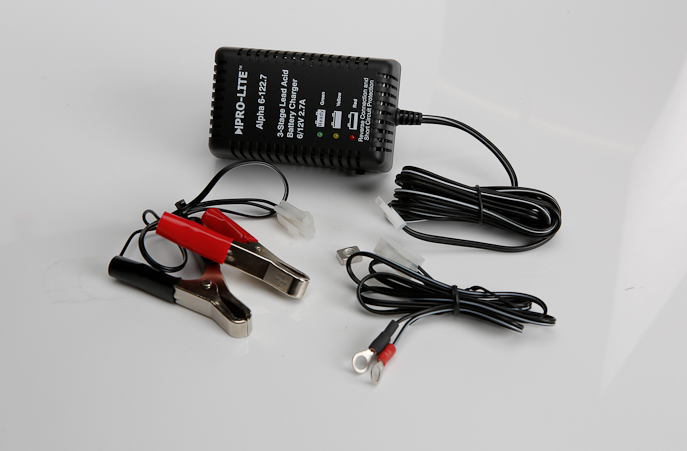How Do Sealed Lead Acid Battery Chargers Work?
The battery really is an amazing invention. It’s only when you stop to think about the power of these devices that you realise how much easier and more efficient they have made our lives.
Larger batteries have the capabilities to power emergency lighting systems, mobility scooters, motorbikes and even entire buildings too.
As well as giving power to a multitude of devices, the battery also has the functionality to recharge too, so that its power can be restored and used once again.
So, what exactly is involved in this process? Let’s take a closer look.
The recharging phase
When you begin charging, electrical energy is converted back into the chemical state. The elements of the battery acid are still contained within the power supply, but they are broken down into electronic particles.
A chemical reaction then results in the current produced by the charger taking the used particles and fusing them back together, so that the battery can return to its normal working state once full charging is complete.
Charging your battery for the required amount of time is highly recommended so that maximum service life can be achieved.
Using the correct charger

As mentioned, different batteries are used to power a range of various devices. It’s because of this that each one must be connected to the specific charger designed for the model you own.
Always make sure you are using the dedicated charger for your device. So for example, if you are charging a mobility scooter battery, use a charger that’s compatible for this. If you use the wrong charger then you run the risk of causing more damage than good.
3 stage charging
When chargers utilise what’s known as a 3 stage charging method, the full phase goes through, not surprisingly…three main stages!
This method is displayed below and measures the voltage level of the battery, before changing the output of the charger accordingly.
Here’s the full process explained in more detail:
Step 1 - Bulk charge
The charger provides a consistent current and the voltage increases until it reaches a pre-determined level. A large percentage of the recharge process is achieved during this single phase alone.
Step 2 – Constant voltage
Otherwise referred to as the ‘Absorption stage’, during step two the voltage is held at a consistent level, whilst the current level decreases until full charge is completed.
Step 3 – Float
During stage three, the charge voltage is decreased to the required and recommended float level. The current also drops to less than one percent of the battery capacity. The float stage will maintain full battery power and also means that you do not need to disconnect the charger from the appliance too.
Constant current charging
In contrast to the above method, this charging process provides, as the name suggests, a constant current into the battery, regardless of whether it’s needed or not.
These chargers are on the whole cheaper alternatives than those mentioned above, as they do not reduce the current or voltage level at any given stage.
If you are going to use this type of charger, then make sure you keep a close eye on how long the batteries have been charging for. If left unattended for a prolonged period of time, overcharging is possible. This is the main distinction between the constant current method and the 3 stage charging process.
There’s nothing wrong with using this variation, you just need to be more vigilant when charging is taking place.
Contact Blue Box Batteries
We hope you’ve learnt a thing or two about how chargers work and restore full power back to your batteries. It’s a science that few people are aware of, although it’s one that we should all be thankful for.
Remember, if you need to get hold of a brand new charger new charger then here at Blue Box Batteries we stock a wide range of devices suitable for a whole host of applications.
Our team understand that choosing a charger isn’t always an easy task, so if you require further assistance, please don’t hesitate to get in touch today.
Latest Headlines
Bulk Orders
Discounted prices are available for bulk orders, please contact us to discuss your requirement.